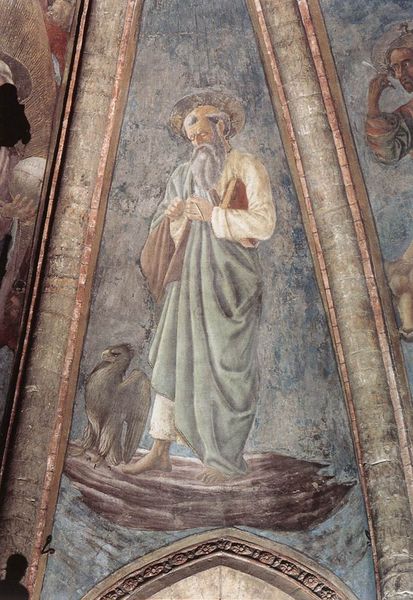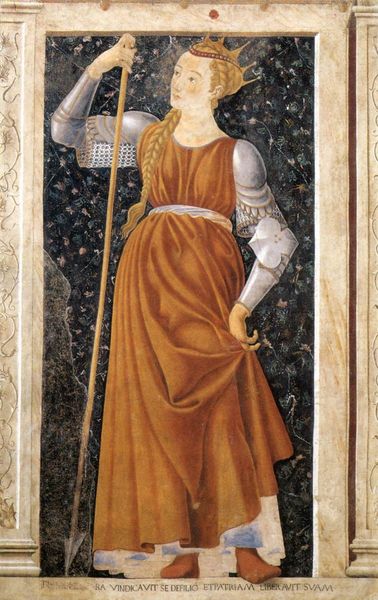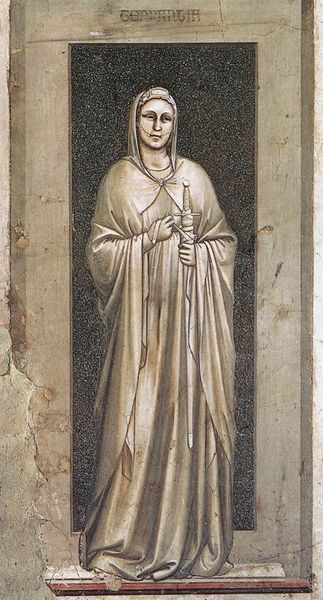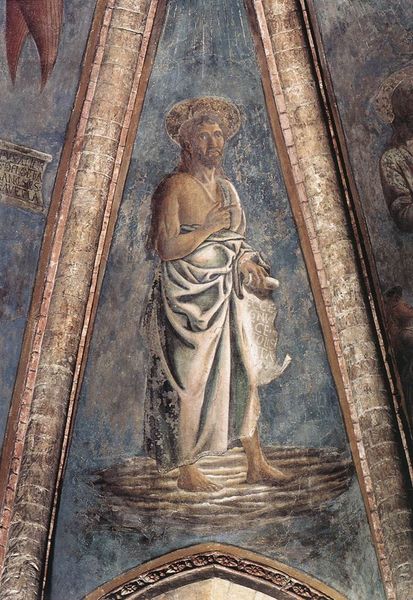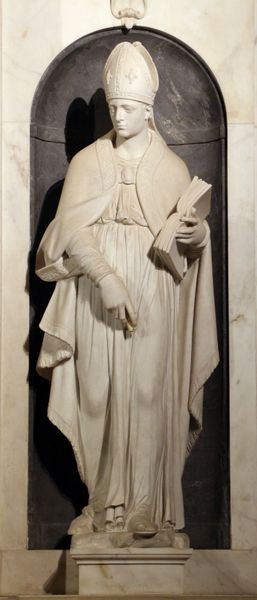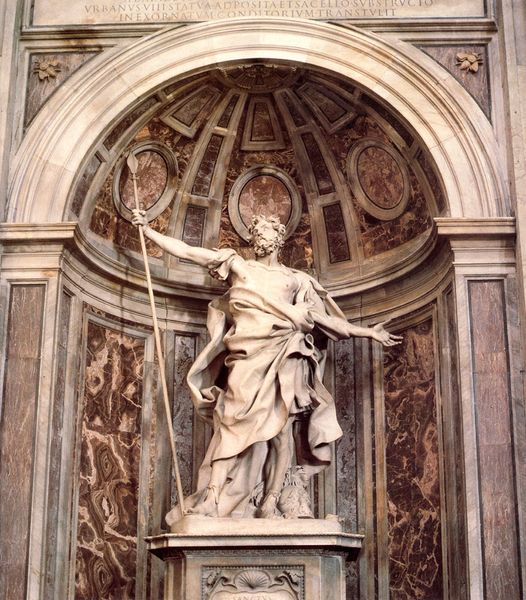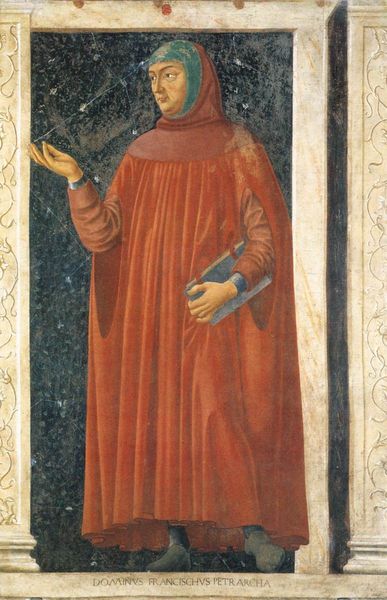
painting, fresco
#
portrait
#
medieval
#
painting
#
figuration
#
fresco
#
academic-art
#
italian-renaissance
Copyright: Public domain
Editor: Here we have one of the frescoes from the Rinuccini Chapel in the Basilica di Santa Croce. It's by Giovanni da Milano, dating back to about 1370. It's fascinating how a scene from so long ago still has such presence! What jumps out at you when you look at this work? Curator: What a delicious piece, isn’t it? It almost feels like peering through a crack in time. For me, beyond the religious context, there's something so profoundly human here. Look at the face – the slight asymmetry, the way the eyes are painted. It hints at the inner world of the subject, their personality almost pushing through the formal pose. Do you notice the delicate detailing on the Bishop’s mitre and the crook that resembles a medieval staff of office? Editor: I do see it now! So much more interesting than just a saint in a church. But how much of that is us projecting our modern sensibilities back onto a 14th-century work? Curator: Ah, a perfect question. Of course, we're always interpreting through our own lens. But da Milano was a revolutionary, pushing beyond the flat, stylized figures of earlier medieval art. He was really striving for naturalism, a sense of individual character. The weight and volume he conveys through his skillful application of fresco is astounding, nearly sculpting the figure into form through the subtle dance of color and value. I feel that is how the master invites the viewer into a collaboration. Editor: That's given me a completely new perspective. I came expecting stiff religious iconography, but you've highlighted the artist's pursuit of human representation, an awakening that resonates. Thank you. Curator: And thank you for seeing with such curious eyes. It’s in those moments of connection across centuries, through the art, that makes all the dust and dirt so profoundly worthwhile.
Comments
No comments
Be the first to comment and join the conversation on the ultimate creative platform.

